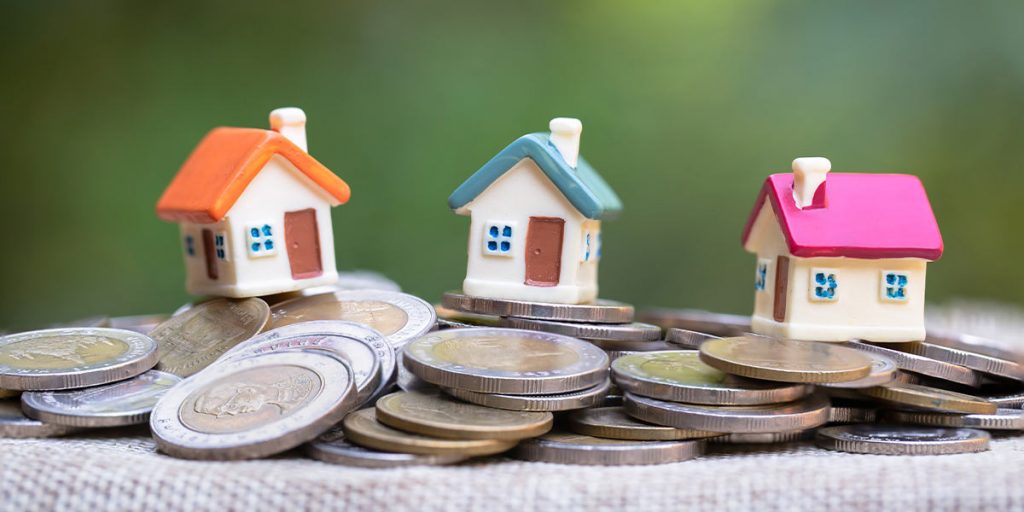Lots More Price Declines Are Coming’: Moody’s Chief Economist Sounds Alarm On Commercial Real Estate, Warns That Loan Defaults Are ‘Sure To Increase’

Real estate investing has gained popularity in recent years — perhaps because the asset is a well-known hedge against inflation. But according to Moody’s Analytics, it’s not all sunshine and rainbows.
Data from Moody’s Analytics reported by Bloomberg revealed that commercial real estate prices in the U.S. fell in the first quarter of 2023, marking the first decline since 2011.
Courthouse records of transactions analyzed by Moody’s showed a drop of less than 1% in the commercial real estate market during the quarter. Multifamily residences and office buildings were the key sectors driving this decline, according to the report.
And this could be just the beginning. Moody’s Analytics Chief Economist Mark Zandi warned that “lots more price declines are coming.”
Don’t miss:
- Elon Musk Is Bullish On Austin. Here’s How To Invest In The City’s Growth Before He Floods It With New Tech Workers
- Want To Grow Your Wealth Passively? These High-Yield Real Estate Notes Might Be Your Holy Grail
Delinquencies And Defaults
Zandi explained the reasoning behind his bearish outlook on Twitter.
The economist pointed out that demand for commercial real estate is weak because of more people working remotely and shopping online. A substantial number of multifamily units are under construction. Meanwhile, it’s challenging to obtain credit for refinancing and purchasing properties.
As a result, Zandi said commercial real estate prices are “expected to be off 10% peak-to-trough by mid-decade.”
And borrowers will likely face difficulties in meeting payment obligations.
“CRE loan delinquencies and defaults are sure to increase, causing agita for the banking system,” Zandi said in a tweet.
Zandi also mentioned that rising delinquencies and defaults “shouldn’t be the catalyst for a revival of the banking crisis” because property owners have built up “ample equity” as a result of the substantial price gains during the pandemic.
Office Vs. Housing
Zandi isn’t the only expert to sound the alarm.
During an interview with former Fox News personality Tucker Carlson, Tesla Inc. CEO Elon Musk issued a bleak warning regarding commercial real estate.
“We really haven’t seen the commercial real estate shoe drop. That’s more like an anvil, not a shoe,” Musk said. “So the stuff we’ve seen thus far actually hasn’t even — it’s only slightly real estate portfolio degradation. But that will become a very serious thing later this year, in my view.”
He argued that the work-from-home trend has substantially reduced the use of office buildings around the world. And that does not bode well for the segment.
“Almost all cities at this point have record vacancies of commercial real estate,” Musk said.
Billionaire investor Stanley Druckenmiller also highlighted the challenges facing office buildings at the 2023 Sohn Investment Conference.
When discussing how the median regional bank has 43% of its loans in commercial real estate, Druckenmiller pointed out that “around 40% of that is in office.”
And because of the Great Resignation and more people working from home, he said, “We have a higher vacancy rate than we had in 2008.”
But it’s a different story for housing.
“Housing has obviously gone down dramatically given the 500 basis-point increase in interest rates,” Druckenmiller said.
“But unlike [2007 and 2008], we actually have a structural shortage in single-family homes going into this. So if things got bad enough, I could actually see housing — which is about the last thing you would think of intuitively — could be a big beneficiary on the way out.”
The reality is, elevated home prices and high mortgage rates mean owning a home is less feasible. And when people can’t afford to buy a home, renting becomes the only option. This creates a stable rental income stream for landlords.
The best part? It’s easy for retail investors to invest in housing — and you don’t actually need to buy a house to do it. There are publicly traded real estate investment trusts that own income-producing properties and pay dividends to shareholders. And if you don’t like the stock market’s volatility, there are crowdfunding platforms that allow retail investors to invest directly in residential real estate with as little as $100 through the private market.
Read next:
- While REITs Are Struggling, Private Market Real Estate Pulls In Huge Returns
- ‘People-First’ Real Estate Fund Shares Rent With Tenants While Generating Strong Returns For Investors
Don’t miss real-time alerts on your stocks – join Benzinga Profor free! Try the tool that will help you invest smarter, faster, and better.
This article ‘Lots More Price Declines Are Coming’: Moody’s Chief Economist Sounds Alarm On Commercial Real Estate, Warns That Loan Defaults Are ‘Sure To Increase’ originally appeared on Benzinga.com


